The document provides an overview of the use of pointers in programming, focusing on their role in memory allocation, data manipulation, and function interactions. It explains how pointers allow for direct access to memory addresses and facilitate passing variables between functions, enabling changes to persist across contexts. The document also discusses various pointer types, their declaration, initialization, and the significance of dereferencing in accessing and modifying values in memory.
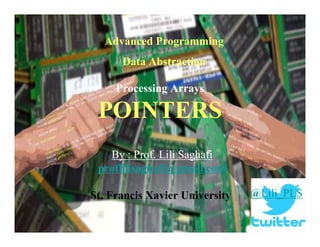
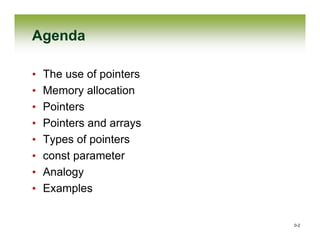



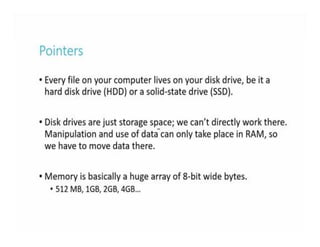







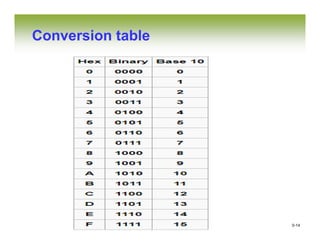

















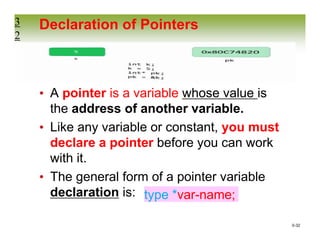


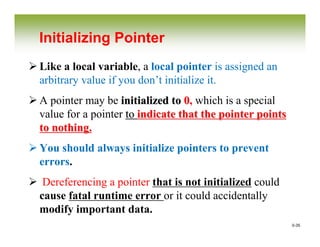
















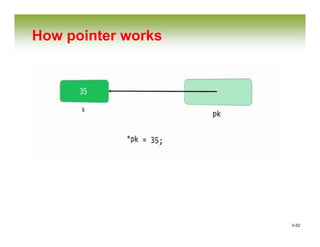
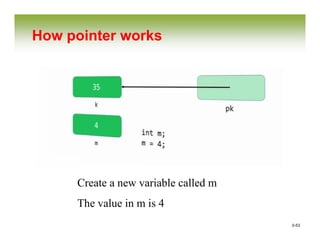

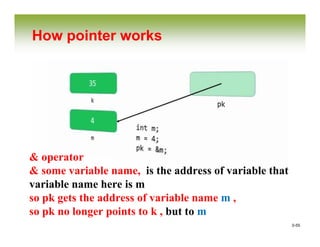







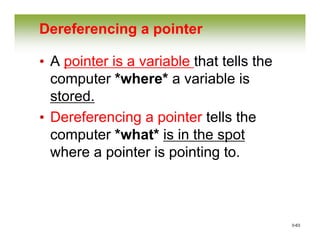
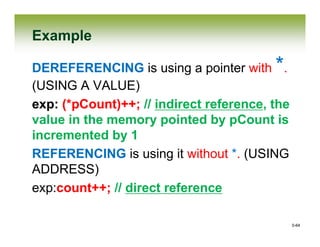







![0-72
Arrays and Pointers
An array variable without a bracket and a subscript actually
represents the starting address of the array.
In this sense, an array variable is essentially a pointer.
Suppose you declare an array of int value as follows:
int list[6] = {11, 12, 13, 14, 15, 16};
11 12 13 14 15 16
list+0 list+1 list+2 list+3 list+4 list+5](https://image.slidesharecdn.com/pointers-180606153407/85/Pointers-by-Professor-Lili-Saghafi-72-320.jpg)


![0-75
array parameter or pointer
parameter
void m(int list[], int size) can be replaced by void m(int* list, int size)
void m(char c_string[]) can be replaced by void m(char* c_string)](https://image.slidesharecdn.com/pointers-180606153407/85/Pointers-by-Professor-Lili-Saghafi-75-320.jpg)
![0-76
#include <iostream>
using namespace std;
// function declaration
double getAverage(int *arr, int size);
int main ()
{ // the value pointed by arr is an int array with 5 elements.
int balance[5] = {1000, 2, 3, 17, 50};
double avg;
// pass pointer to the array as an argument.
avg = getAverage( balance, 5 ) ;
// output the returned value
cout << "Average value is: " << avg << endl;
return 0;}
double getAverage(int *arr, int size) // function body
{ int i, sum = 0; double avg; for (i = 0; i < size; ++i)
{ sum += arr[i]; }
avg = double(sum) / size;
return avg;}
Average value is: 214.4
*arr means the value pointed by
arr
The values inside arr
An array name is just a pointer to its first
element](https://image.slidesharecdn.com/pointers-180606153407/85/Pointers-by-Professor-Lili-Saghafi-76-320.jpg)

![0-78
#include <iostream>
using namespace std;
void printArray(const int*, const int);
int main()
{
int list[6] = {11, 12, 13, 14, 15, 16};
printArray(list, 6);
return 0;
}
void printArray(const int* list, const int size)
{ for (int i = 0; i < size; i++)
cout << list[i] << " ";
}
11 12 13 14 15 16](https://image.slidesharecdn.com/pointers-180606153407/85/Pointers-by-Professor-Lili-Saghafi-78-320.jpg)

![0-80
#include <iostream>
using namespace std;
int* reverse(int* list, int size)
{ for (int i = 0, j = size - 1; i < j; i++, j--)
{
// Swap list[i] with list[j]
int temp = list[j];
list[j] = list[i];
list[i] = temp;
}
return list;}
void printArray(const int* list, int size)
{ for (int i = 0; i < size; i++)
cout << list[i] << " ";
}
int main()
{
int list[] = {1, 2, 3, 4, 5, 6}; int* p = reverse(list, 6); printArray(p, 6); return 0;}
6 5 4 3 2 1](https://image.slidesharecdn.com/pointers-180606153407/85/Pointers-by-Professor-Lili-Saghafi-80-320.jpg)
![0-81
Array is Treated as Pointer
In C/C++, an array's name is a pointer
pointing to the first element (index 0) of the
array.
For example, suppose that numbers is
an int array, numbers is also an int pointer,
pointing at the first element of the array.
numbers is the same as &numbers[0].
*numbers is number[0];
*(numbers+i) is numbers[i].](https://image.slidesharecdn.com/pointers-180606153407/85/Pointers-by-Professor-Lili-Saghafi-81-320.jpg)






